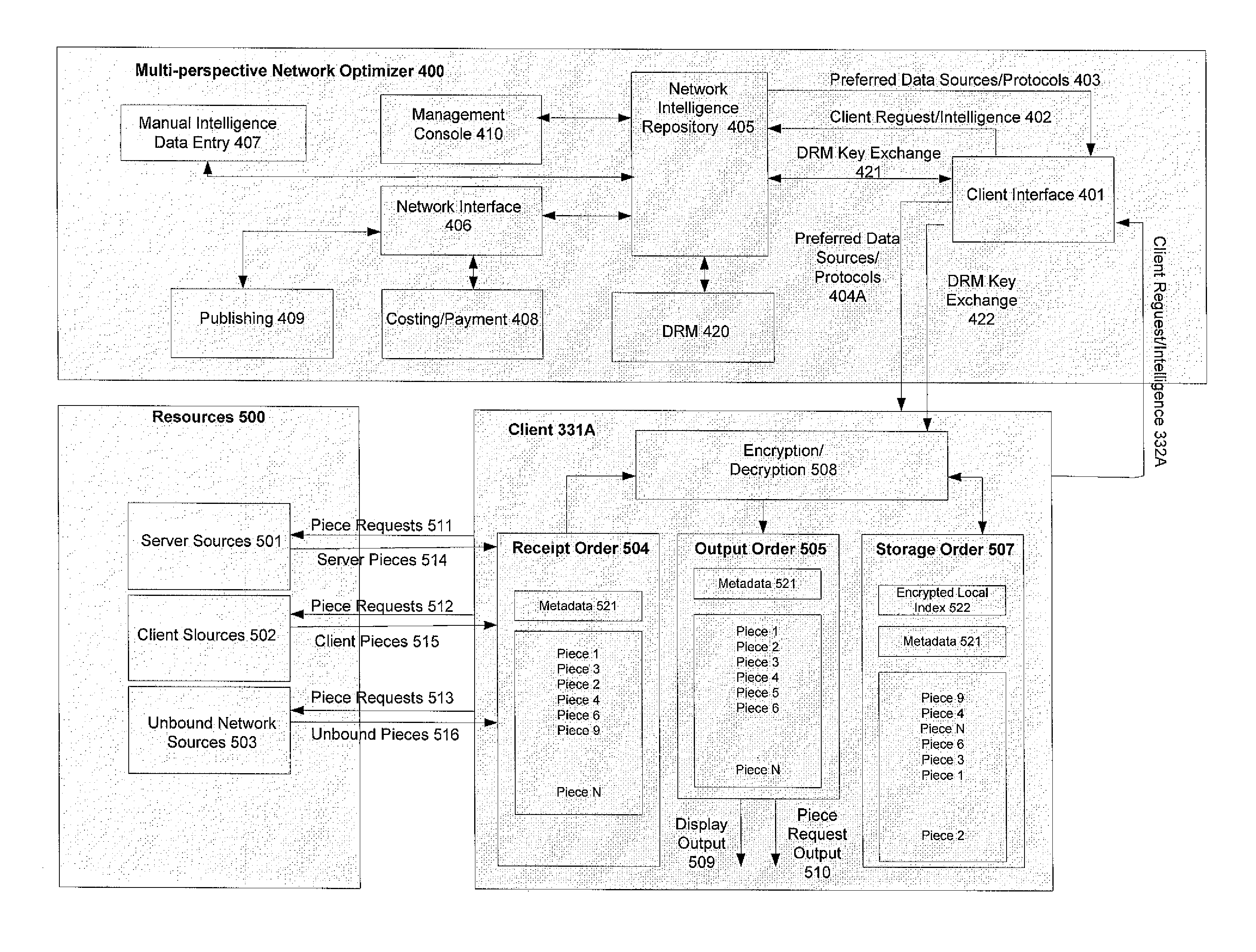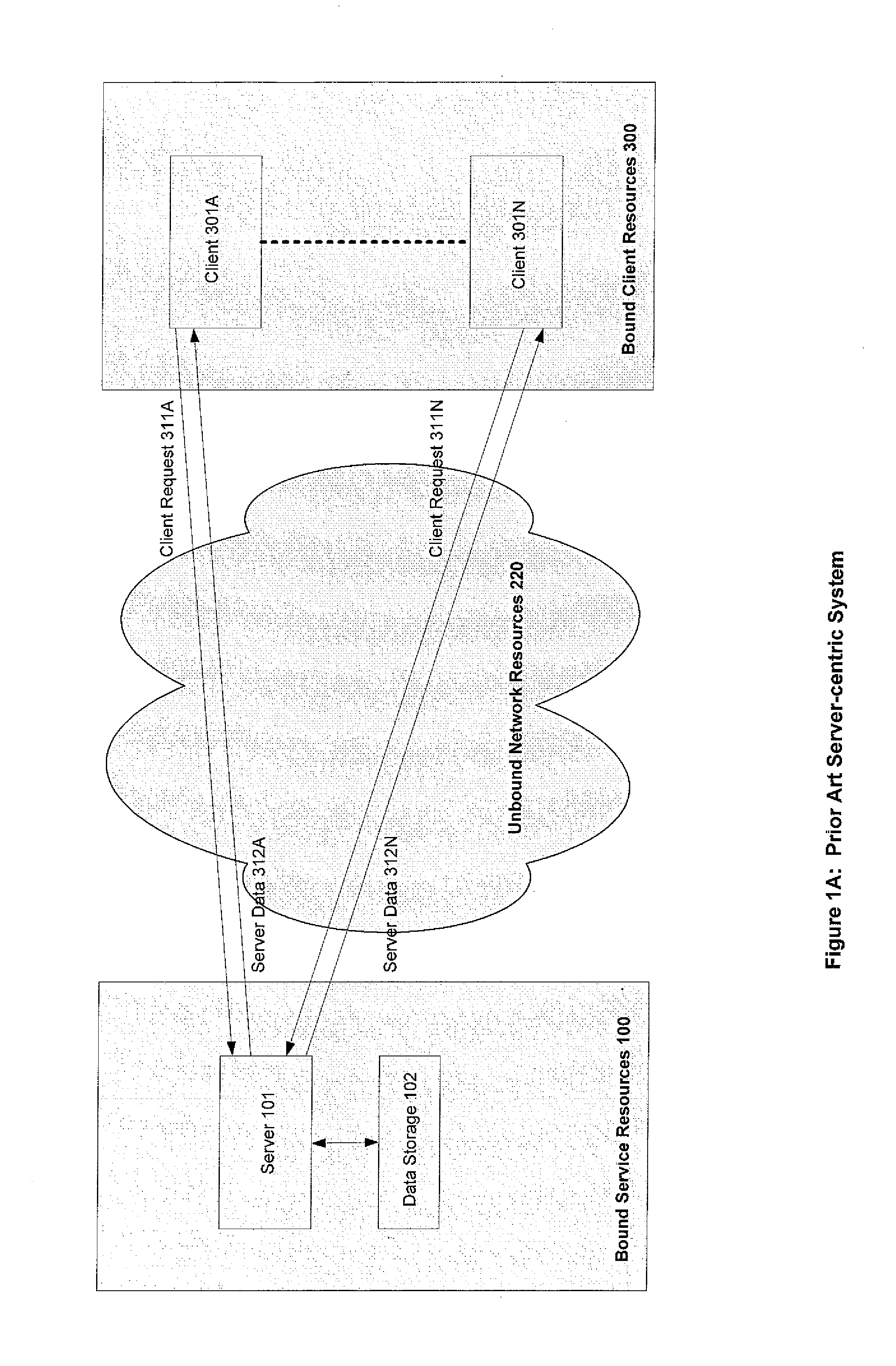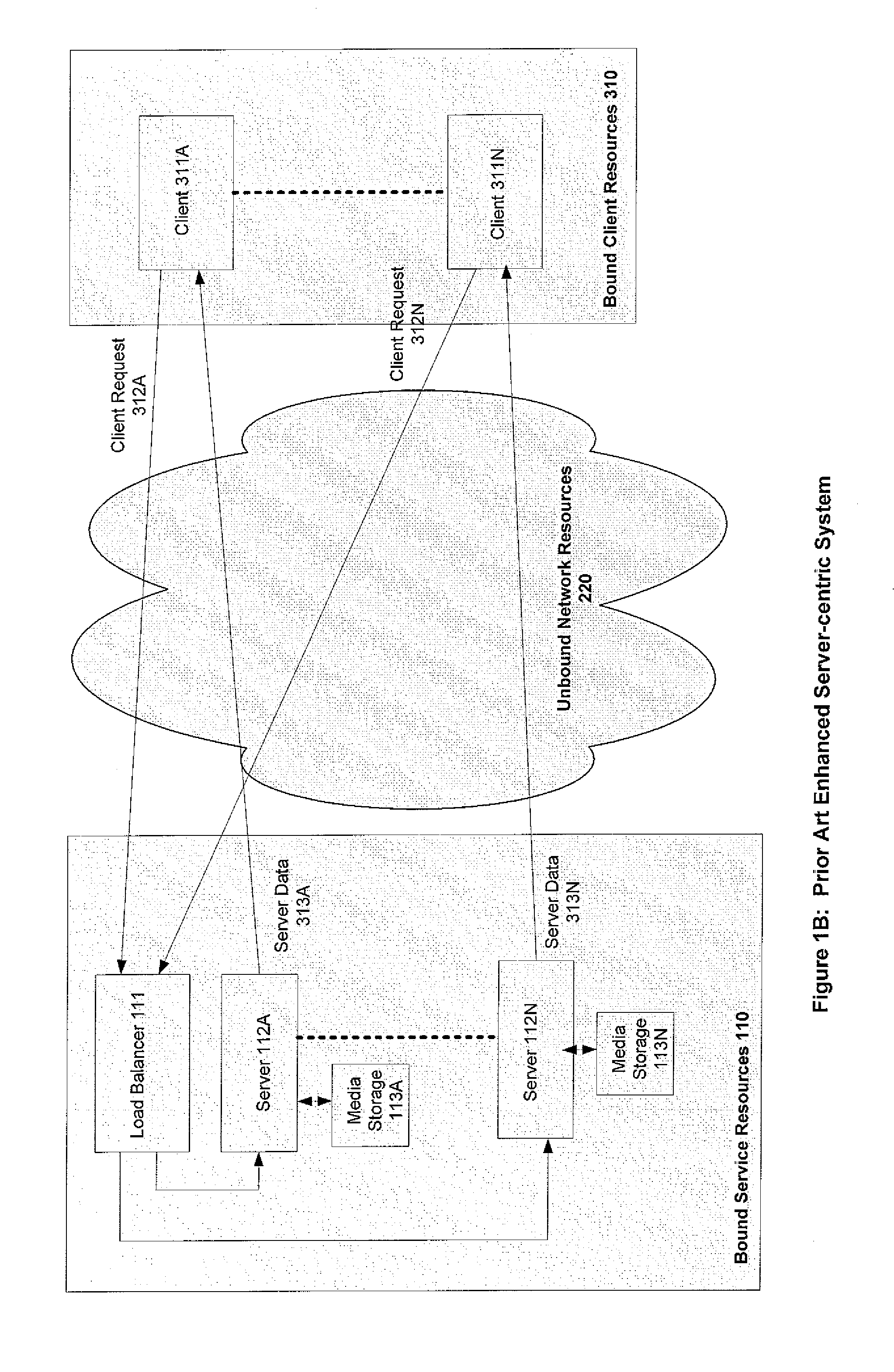Typically, there is a short buffering
delay before the media starts playing.
Such
server-centric systems are simple and robust under stable conditions; they can, to a degree, support one of the key network optimization goals, that of commercial
controllability, since all data requests pass through a
single point of control However, the characteristics of the other three key optimization variables, performance,
scalability, and cost are less than ideal, all because of the concentration of
service demand at a
single point in the
server.
Typically, the whole
system is based on a single protocol, which may not be optimal under all circumstances.
Responding to such over-capacity demand is not smooth.
To ensure smooth scaling characteristics,
server-centric systems must plan in advance for peak demands, which leads to a non-optimal cost variable, because provisioning for
peak demand usually means that excess capacity must be paid for which is not used in normal operations.
As well, the necessity for such advance planning limits aspects of commercial controllability, since the
system may have difficulty maintaining simple aspects of commercial control such as matching service supply with the customer demand for service.
It has similar commercial control characteristics as the
system of FIG. 1A, more smooth scalability, but the same limitations on performance and a cost characteristic that is similar to FIG. 1A, since the system must be provisioned against projected
peak demand.
This makes the server-centric model subject to performance and efficiency constraints, particularly due to network latency limitations which introduce differential delays, and hence, protocol
throughput problems in servicing data requests.
These limitations can be particularly severe in supporting streaming protocols.
There is a theoretical possibility that such systems could be redesigned to support multiple protocols, however this has not been implemented in practice.
However, relative to ultimate scalability and
cost optimization, the system still suffers from the necessity of provisioning to meet peak loads and an increasing burden of system management complexity.
Moreover, although the edge
network configuration may improve performance by virtue of locating servers on low-latency paths close to each
client, the
overall efficiency of the system suffers by limiting the load balancing to only choose a server which is close to the requesting
client.
This leaves distant server resources un-used although they may be available and undermines the efficiency of the overall network.
Ultimately, the one server to one client constraint of server centric systems has been impossible to scale while maintaining overall network efficiency.
However, such point-to-point file transfers are limited by the availability and the
upload bandwidth of the client providing the data.
Most internet client connections have limited
upload bandwidth relative to download bandwidth so that performance is severely limited from the perspective of the requesting client which has much greater reception bandwidth than a single transmitting client can provide.
There is a theoretical possibility that such systems could be redesigned to support multiple protocols, however this has not been implemented in practice.
There is, however, a hard limit to scalability in client-centric systems imposed by the ratio of client download bandwidth to client
upload bandwidth.
Thus, as clients request more bandwidth and the number of clients grows, the systems will reach severe limits on further scalability and available performance.
A concealed aspect of lack of commercial control and cost relates to the question of what the true cost of client resources is and who should pay for the bandwidth used by client-centric systems.
Although the costs of client-centric systems appear low to the end-user client, the architecture of the system forces increased costs on ISPs who must pay
internetworking data transfer costs on the traffic in and out of their network.
This leads to a motivation for ISPs to limit the bandwidth and
Quality of Service (QOS) available to client-centric data distribution systems, negatively impacting performance and potentially scalability.
Performance can be good under certain circumstances where large numbers of supply clients are available for a smaller number of requesting clients However, there is no control on the availability of clients to upload and external factors such as ISP controls and client firewall adoption are beginning to
impact performance.
Much of the prior art relative to client-centric systems is focused on performance, since cost tends to be regarded as negligible, scalability infinite and commercial control not a goal.
A client can directly access its own configuration data and indirectly learn some of the characteristics of the network sector of which it is a part and information about the limited number of clients that it shares data with, but it cannot access data concerning other clients with which it does not share any transactions.
A server can consolidate information from transactions across multiple clients throughout the network, but it does not have direct access to the local resources and characteristics of any particular client.
The streaming server approach more closely satisfies users' desires for an immediate media experience, at the cost of complexities of
network integration and high server and bandwidth costs.
It is very difficult to scale streaming servers to large numbers of simultaneous users since they must provide a continuous
stream of data to the user over the length of the media experience; and streaming servers typically require more complex interactions between client and server than can be accommodated in the standard
Web protocols such as HTTP, FTP and SMTP, necessitating the use of proprietary protocols which in turn introduce difficulties of interaction with user firewalls and other internet infrastructure.
Peer-to-peer systems have significantly lower costs, but share the problems of
file transfer systems with regard to user experience deficiencies and the problems of streaming server proprietary protocols with regard to difficulties of interaction with user firewalls and other internet infrastructure.
A dominant problem of peer-to-peer systems lies in their lack of any commercial control mechanism which is deeply embedded in their architecture,
stemming from their history as anonymous (and often illegal)
file sharing networks.
This approach is effective in increasing scalability and performance, but is ineffective at addressing cost, since the network proprietor must still purchase, operate and maintain the
distributed cache servers.
However, since the bandwidth currently available to client computers on the internet is asymmetrical (approximately 10 times more download than upload bandwidth) there is a strong scalability limit on peer-to-peer systems in the case of widespread use of large media files.
No existing system addresses optimization of all the key variables: scalability, performance, cost, and commercial control.
 Login to View More
Login to View More  Login to View More
Login to View More 


